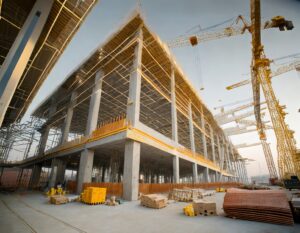In the dynamic landscape of real estate private equity, large institutional investors continually seek strategic partners and opportunities to optimize their portfolios. The Retail Market Report for Austin, Texas, prepared by CoStar, provides a comprehensive overview of the current market conditions essential for investors considering the sale of privately held partnership interests. In this post, we delve into the key findings of the report and analyze their implications for institutional investors.
Market Overview
Austin’s retail sector showcases resilience and growth, driven by the city’s robust population increase and a strong job market. The report highlights a tight market condition with a historically low availability rate of 3.8%. This scarcity of suitable retail space has led to competitive leasing activities, making Austin an attractive market for both new and expanding retailers.
Analysis of Supply Constraints and Leasing Activity
The Austin retail market is currently navigating a complex landscape shaped by supply constraints and shifting leasing dynamics. Despite strong demand driven by the city’s rapid population growth and robust job market, these supply challenges have had a significant impact on leasing activities.
Impact of Limited Availabilities and Supply Growth Slowdown
The limited availability of suitable retail spaces in Austin has become a critical issue. Over the past 12 months, the slowdown in supply growth has been a significant constraint for tenants eager to establish or expand their presence in the city. Many have needed help finding adequate spaces, leading to a slowdown in new leasing volume by nearly 15% from the quarterly average of the past five years. This situation underscores the mismatch between the high demand for retail space and the current supply in the market.
Demographic Trends Driving Demand
Austin’s status as the fastest-growing city in the U.S. among major metros with more than 1 million residents, as per the May 2023 Census Bureau release, has significantly contributed to this demand. The city’s demographic trends, particularly its rapid population growth, have been a key driver behind the strong demand for retail space.
Suburban Markets Leading New Leasing Volume
In response to these trends, Austin’s fast-growing suburban markets, particularly Georgetown and Hays County Submarkets, have seen the majority of new leasing activity in Q2 2023. The Georgetown Submarket has been exceptionally active, accounting for 30% of the total leasing volume during this period. Academy Sports + Outdoors has fully preleased a 51,000-SF retail building at Townwest Commons in Hutto, with expectations for delivery by the end of the year. This move is indicative of tenants positioning themselves to capitalize on the demand from the rapidly expanding resident base, with Hutto itself growing by over 18% between 2021 and 2022.
Higher Construction and Borrowing Costs Affecting Supply
The supply constraints in Austin are further exacerbated by higher construction and borrowing costs, keeping availabilities tight and slowing leasing velocity. Despite this slowdown, Austin’s net absorption rate, relative to its size, positions it as a national leader among major metros. The city ranks second with 1.6% of positive annual net absorption, trailing only Phoenix. Interestingly, lesser-quality assets have shown more robust demand compared to higher-rated properties, with net absorption as a share of inventory for these assets being significantly higher.
Analysis of Construction Trends in Austin’s Retail Market
The construction trends in Austin’s retail market have been a defining feature of its recent evolution, reflecting the city’s response to its rapid population growth and changing consumer needs.
Sharp Rise in Construction Activity
Over the past year, Austin has experienced a sharp increase in retail construction activity, reaching levels not seen since the fourth quarter of 2007. With a total of 2.7 million square feet (SF) underway, this marks a 60% increase from the 1.7 million SF recorded a year ago. Adjusted for market size, Austin now leads among the 50 largest retail markets in the U.S., with 2.3% of its retail inventory under construction. This surge is a direct response to the metro’s remarkable population growth, especially in rapidly expanding suburban areas like Georgetown, Manor, and Kyle.
Population Growth Driving Development
The population growth in Williamson and Hays counties, as reported by the Census Bureau in May 2023, has been a significant catalyst for this construction boom. Growing by 4% and 5%, respectively, these counties have attracted residents seeking a lower cost of living and a family-friendly environment. Retailers are closely following this expansion, with these two counties accounting for 55% of the market’s total development pipeline. This trend underscores the direct correlation between population growth and the demand for retail spaces.
Focus on Storefront and Freestanding Properties
A notable aspect of the current construction trend is the emphasis on storefront properties, which constitute a significant portion of the development pipeline. Projects like CSW Development’s expansion of Kyle Crossing, totaling 157,000 SF, exemplify this trend. This project, situated in a rapidly growing area of the Austin metro, is designed to cater to a diverse mix of uses, including restaurants, healthcare, and wellness. Developers are actively designing freestanding properties for tenants such as Hobby Lobby, Avis Budget, and Starbucks, highlighting a diversification in the types of retail spaces under development.
 Recent Slowdown in Construction Starts
Recent Slowdown in Construction Starts
Despite the overall surge in construction activity, recent data from Q2 2023 indicates a slowdown, with only 270,000 SF breaking ground – a 50% decline compared to the same period last year. Tightening lending standards, higher interest rates, supply chain disruptions, and elevated construction costs are the factors contributing to this deceleration. These challenges have made many projects less financially viable, causing developers to postpone or reevaluate their construction plans.
Forecast and Mitigated Risk of Oversupply
Looking ahead, forecasted a total of 2.6 million SF of net deliveries in 2023, the highest since 2008. The preleasing of 81% of this space significantly reduces the risk of oversupply from speculative construction. This preleasing trend is a positive indicator of the continued strong demand for retail space in Austin despite the recent slowdown in construction starts.
In summary, the construction trends in Austin’s retail market are a reflection of the city’s dynamic growth and the evolving needs of its residents and businesses. While recent challenges have caused a slowdown in new projects, the overall trend remains positive, with a healthy pipeline of developments underway. For institutional investors and capital groups, these trends offer valuable insights into the market’s potential and the strategic opportunities available in Austin’s retail sector.
Analysis of Sales Trends in Austin’s Retail Market
The first half of 2023 has seen a notable shift in the transaction volume within Austin’s retail market, reflecting broader economic trends and market-specific dynamics.
Decline in Transaction Volume
The transaction volume in the first half of 2023 continues to decline, potentially reaching its lowest levels since 2009. This slowdown is primarily attributed to persistently wide bid-ask spreads and tighter lending practices by banks. With only 1.2 million square feet (SF) of properties sold in this period, there’s a significant drop from the 3.1 million SF traded in the first half of 2022. When compared to the 50 largest U.S. markets, Austin’s sales volume, adjusted for size, ranks in the bottom quartile. This indicates a more pronounced slowdown in Austin’s retail property market compared to other major U.S. markets.
Impact of World Class Property Company’s Portfolio Sale
The sale of World Class Property Company’s portfolio properties, auctioned during its bankruptcy proceedings, contributed significantly to the transaction volume in 2023. The sale of the Arboretum Crossing, a notable five-property holding in a high-profile area near the Domain, was a vital part of this portfolio. These properties, categorized as freestanding, 3-star properties, were acquired by Stockdale Capital Partners, with prices ranging significantly.
Pricing Trends for Properties
From 2021 to mid-2022, prices for most 3-star, freestanding, and storefront properties under 50,000 SF ranged between $2.5 and $5 million. Into 2023, this pricing trend persisted, with sales focusing in the slightly higher range of $2.75 to $5.5 million. The sale of the 137,000-SF Arboretum Crossing, which went for approximately $30 million, stands as an outlier. Higher-quality buildings, representing only 15% of the overall inventory, have had fewer observations to determine their pricing trends.
Focus on Single-Tenant Triple-Net Properties
Single-tenant triple-net properties have emerged as a favorable target among buyers. A notable acquisition was made by GIC Real Estate, the second-most active buyer in Austin this year. The portfolio sale encompassed 93,000 SF of retail space across seven buildings in South Austin and Cedar Park, areas known for their solid consumer base. The tenants for these properties include Ashley Home Store, Cadence Academy Preschool, and Avery Ranch Animal Hospital, indicating a focus on stable, consumer-oriented businesses.
Future Outlook Amidst Economic Challenges
Despite the strong demand and record highs in annual rent growth, property prices in Austin’s retail market have yet to show substantial declines. However, the anticipated environment of slowing rent growth, coupled with the persistence of elevated costs of capital, could pose challenges for the market. This scenario suggests that while the market fundamentals remain strong, external economic factors could impact transaction volumes and property valuations in the near future.
In conclusion, for institutional investors and capital groups, understanding these sales trends is crucial for strategic decision-making. The current market conditions in Austin present both challenges and opportunities, requiring a nuanced approach to investment and portfolio management in the retail sector.